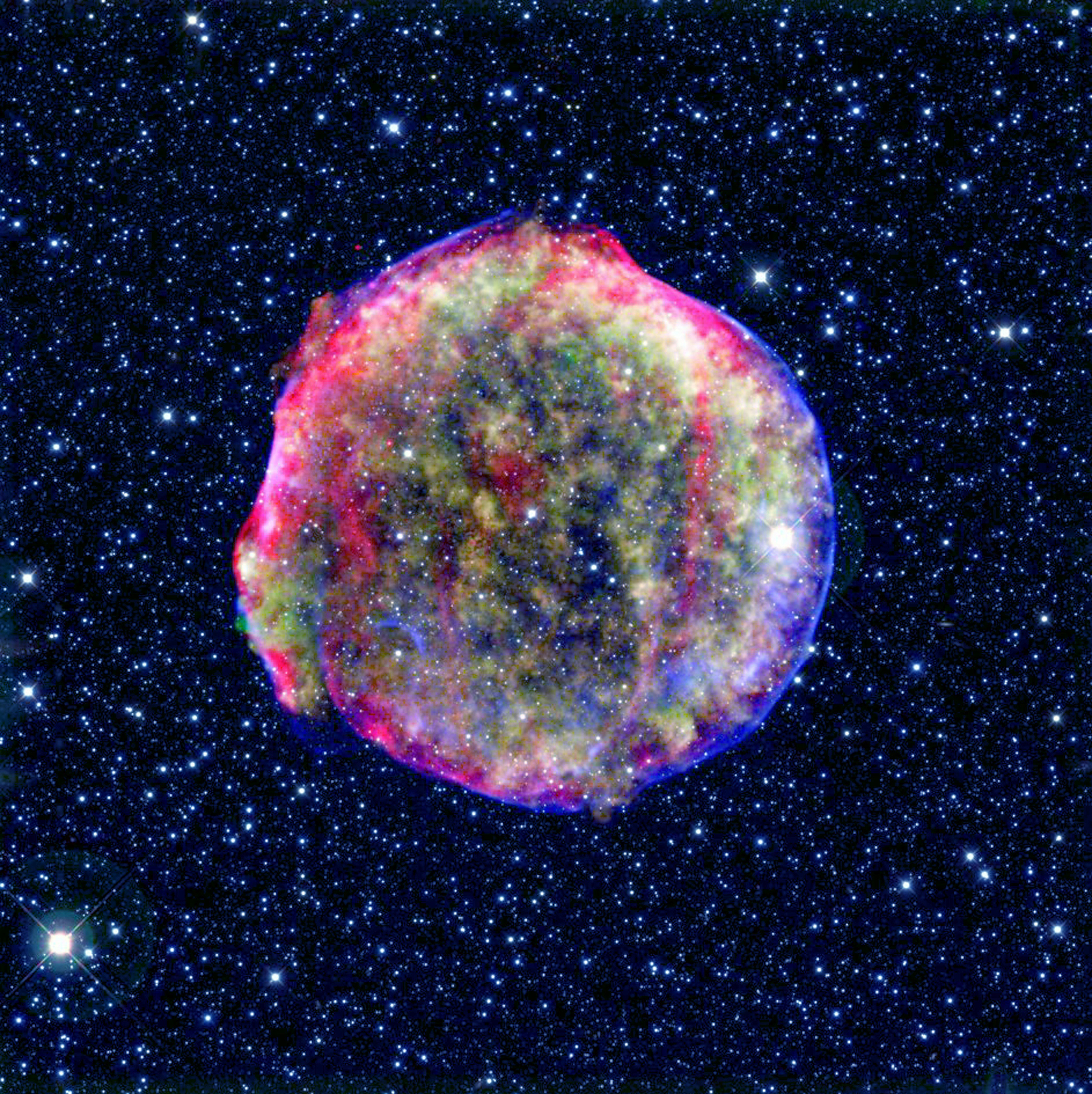
Seven years ago, astronomers at the Japan Aerospace Exploration Agency (JAXA) and their colleagues were wrestling with a dilemma.
The Hitomi spacecraft promised to unpack secrets of the highest-energy events across the universe, visible only in X-ray light. This is typically how astronomers find a black hole gobbling up matter, or capture the most critical details of a star exploding. Teams around the world were on the brink of success, as Hitomi gained a spectacular commissioning image of a cluster filled with thousands of galaxies.
But just a month after launch, the spacecraft began to spin uncontrollably, until it broke apart into pieces.
This week, there’s new hope for JAXA’s X-ray astronomy efforts, along with its international collaborators. A team of half a dozen NASA researchers has flown out to Tokyo, where they will then make their way to the south of Japan to the balmy island home to the country’s largest rocket launch complex, Tanegashima Space Center.

That’s where Hitomi’s successor will launch. Called the X-ray Imaging and Spectroscopy Mission, or XRISM (pronounced “crism”), it is scheduled to launch on Saturday at 9:34 a.m. local time (Friday night at 8:34 p.m. Eastern in the United States). If it survives the commissioning phase (where a launched spacecraft is prepared for its official mission), XRISM will acquire the sharpest X-ray data to date about the most dynamic events in space.
The X-ray universe
Unlike Hubble or the James Webb Space Telescope, images aren’t the chief concern of XRISM. Instead, JAXA wants to use the mission to capture the spectra of these events. This is where you break down the incoming light into its constituent elements and other signals, in a process called spectroscopy. Brian J. Williams, XRISM project scientist at NASA Goddard Space Flight Center, and one of the privileged researchers traveling to Tanegashima, tells Inverse that spectroscopy is like a barcode or a fingerprint. With an observation of a particular wavelength of light, researchers narrow down the type of matter and severity in temperature of the emission source.
Williams specializes in one particular type of high-energy event, and a popular one, too: supernovas. Supernovas pack extraordinary heat, he says, on the order of 10,000 times hotter than the surface of the Sun.

Supernovas emit X-rays, wavelengths invisible to the eye but which tell the tale of extraordinary power from many light-years away. “X-rays are just another form of light. They are just higher-energy photons than optical light, like Hubble sees, or infrared like James Webb sees,” he says.
The current reigning champion of this subfield is NASA’s Chandra X-ray Observatory, but it can’t do it all. The spacecraft achieves fantastic images. Since 1999, it has been observing X-rays coming from the most high-octane events in the universe. While supernovas are very high energy, X-rays also radiate from the millions-of-degrees gas in a galaxy cluster, and from clouds superheated when swirling just outside a supermassive black hole before falling inside.
But Chandra’s spectroscopy is limited. A line graph with Chandra data will feature curved peaks, with a general account of what material is around and the explosive processes that made them. XRISM’s data promises to be sharper, capable of filling in the gaps about how elements like those fundamental to the existence of life, like carbon and oxygen, enter our universe.
To observe X-ray events, you need to be high above the atmosphere. While blanketing us on the surface from harmful cosmic radiation, the atmosphere makes it hard on land to discern the distant drama whispering, via X-rays, in our direction. That’s why important spectra like this require a space telescope like XRISM.
The anticipation
When XRISM’s predecessor Hitomi delivered spectral data from the Perseus cluster of galaxies in 2016, Williams and the team were thrilled. They’d gain an unprecedented look at gas, heated to 90 million degrees Fahrenheit, that surrounds thousands of galaxies huddled together some 240 million light-years away.
“Seeing the technology actually work in space, and giving us the stuff we had only been able to simulate before, was really incredible,” Williams said.
“As a scientist, your mind just goes to all the other things that you could observe. Like alright, if we got this beautiful spectra from a galaxy cluster, what is it going to look like if we point at the nucleus of a galaxy? What is it going to look like if we point at a black hole with a star orbiting around it? Or a supernova remnant? And then,” Williams adds, “when the mission was lost a month in, one of my colleagues at Goddard put it well. He said it was sort of like being able to glimpse the promised land, but not actually walk in.”

First light
Richard Kelley, XRISM mission scientist based at NASA Goddard, flew to Japan days before Williams to prepare the spacecraft for its upcoming relocation some 340 miles above Earth’s surface. XRISM and Hitomi are virtually the same mission, and like Williams, Kelley has waited a long time to see if the novel technology finally gets to operate in space.
XRISM launches on Saturday at 9:34 a.m. local time. If all goes well, its solar panels soon after release and lock into place. Their energy will power five cryocoolers to chill liquid hydrogen, which will keep the spacecraft cold enough to operate its two instruments. During commissioning, data is collected from a high-energy source that Kelley tells Inverse has yet to be decided. After that, the mission moves through more checks until late November or early December 2023.
It’s then astronomers anticipate having first light. So when a black hole superheats the gas clumps circling just beyond its event horizon, the unleashed energy will travel across space and strike the two bug-eyed-shaped mirror assemblies at one end of the spacecraft, funneling waves towards the novel instruments. And XRISM will open up a new window unto the universe.







